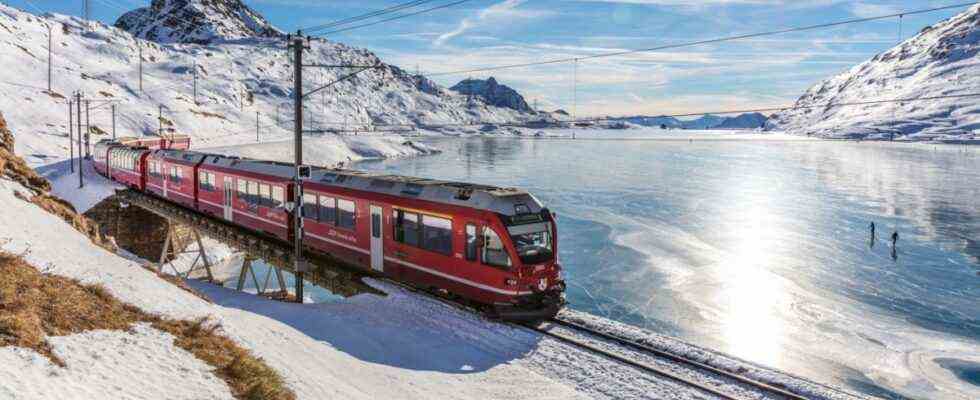“Who feels like taking off shoes and belts and throwing away bottles, having to be scanned, stowing prams, losing tablets and enduring all sorts of other controls, when you are completely relaxed in,” writes Monisha Rajesh take a train and take as many bottles as you want? ” Well, at least not the British travel journalist. She discovered train travel in 2010 on a four-month trip through India. Back then it was a pragmatic decision to take the railroad, mainly for reasons of cost. Since then, however, she has deliberately avoided flights when she can take the train instead. This is how Rajesh describes it in the foreword of her illustrated book “Migratory Birds”, in which she describes a good 40 special train journeys.
Because trains have long ceased to be a pure means of transport for them to get to a destination, but have become the main attraction of many of their journeys. First of all, regardless of the route. Monisha Rajesh appreciates talking to travelers, and the slower and longer a train glides through the landscape, the more she prefers it, because then she can discover all the more. She also appreciates the typical local food on many trains. All of this creates a “very special romance”.
Monisha Rajesh has now traveled on trains on every continent on which railway tracks have been laid. Including very luxurious ones and those that are mainly used by tourists. But also in common long-distance and commuter railways. She strongly recommends exploring the villages of the Cinque Terre on the Ligurian coast by regional train. Because between the tunnels you get to see stretches of coastline that even hikers cannot see. In South Africa, the author contrasts the luxury train Rovos Rail with the Shosholoza Meyl, a long-distance train that connects Cape Town with Johannesburg and which the locals also use in their everyday life. She gives practical tips for each of these routes, including buying a second class instead of first class ticket for the Konkan Railway along India’s southwest coast. Because then you don’t stay in a private compartment and miss a lot.
Between the concrete travel descriptions, Monisha Rajesh repeatedly inserts texts that deal more fundamentally with railroad issues. In one, she goes into the good as well as the bad and hypocritical aspects of the railways and their construction: She reminds us that in Germany and Cambodia people were sent to death by the state on trains, and that others could be rescued by trains such as the so-called Kindertransporte during the Nazi rule or after the atomic bombs in Japan. That some lines had to be built by prisoners of war under inhumane conditions and that colonial powers created an infrastructure with railroad networks that helped them plunder the occupied countries. Through these descriptions, Monisha Rajesh makes herself aware of her own freedom of travel.
Monisha Rajesh: Migratory birds. Travel by train on the most beautiful routes in the world. Verlag Gestalten, Berlin 2021. 288 pages, 39.90 euros.

